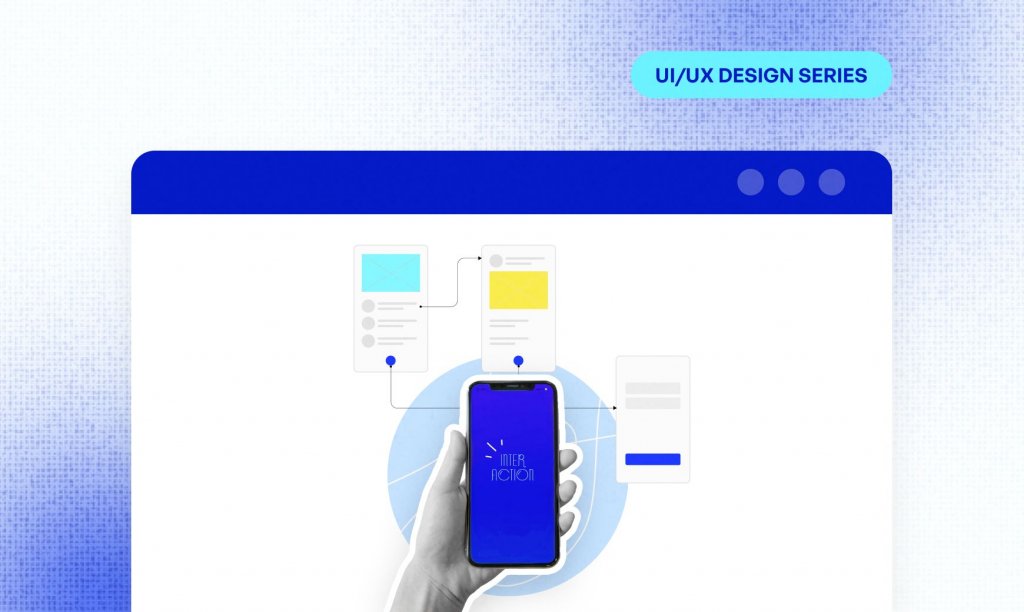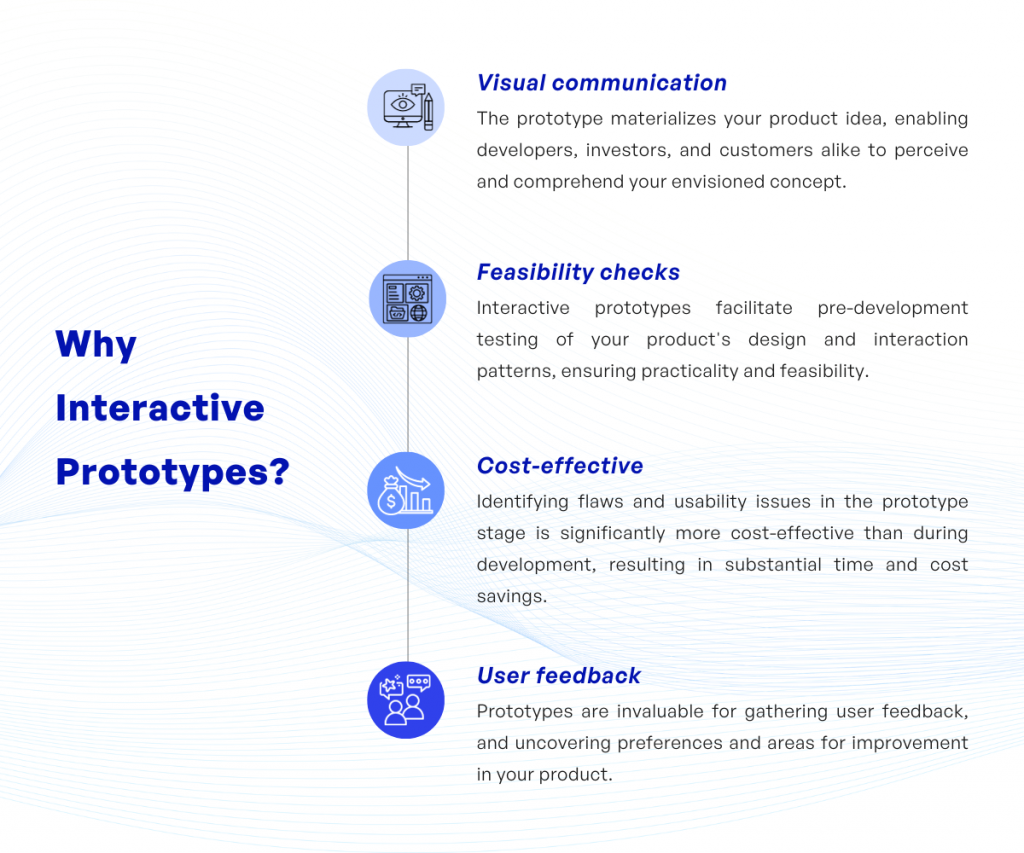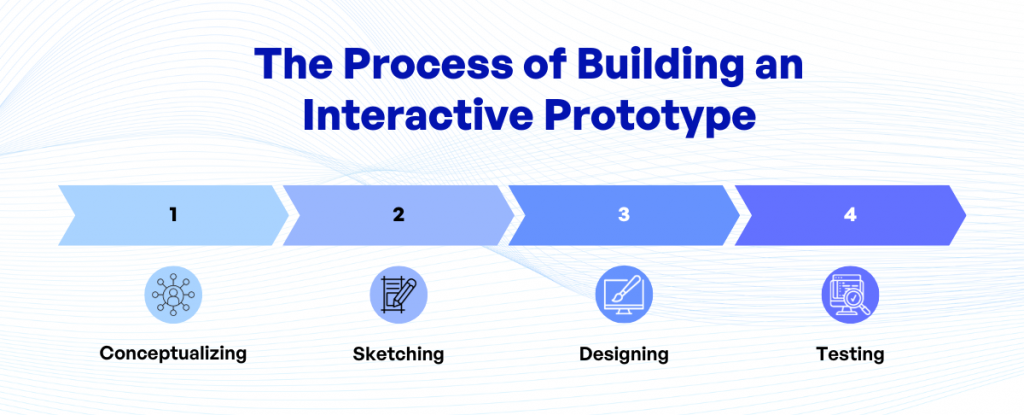
Ever wondered why some startups skyrocket to success while some nosedive into oblivion? One of the key factors is interactive prototyping.
According to the Innovation Leader’s 2019 report, businesses that utilized interactive prototypes during their product development process were more successful, experiencing a 44% higher success rate than those that didn’t.
This statistic simply can’t be ignored – Interactive prototypes are not a luxury, but a necessity. Wondering what makes interactive prototypes so critical for your startup? Let’s break it down.
- They provide a visual way to explore and test your concept before the actual development begins.
- They enhance team communication and collaboration.
- They allow you to address potential issues and user pain points proactively.
But how do you go about creating an interactive prototype for your startup? That’s what we’ll explore in the following sections.
1. An Overview of Interactive Prototyping
So, what exactly is interactive prototyping? The term might sound technical, but it’s actually simple. At its core, an interactive prototype is a draft version of your product that simulates the experience of the final build. It’s interactive because users can interact with it, much like they would with the real thing. The key difference is that this prototype is a mock-up meant for testing and tweaking.
It’s not just about creating static images. Instead, interactive prototypes go a step further by mimicking the functionality and user interactions of a fully developed version. You’d be amazed to see how a mere sketch can transform into a clickable object, that’s the magic of interactive prototypes!
Let’s delve a little deeper, shall we? Interactive prototyping exists mainly to resolve issues and identify improvements. Think of it as a virtual reality check for your product. It allows you to see exactly how users would navigate your app or website, revealing any potential bottlenecks, confusing elements, or less-than-stellar design choices.
Just imagine the potential of laying your hands on a working model, albeit simplified, before venturing into the tumultuous waters of full-scale development. Not only do you get to visualize your idea, but it’s a chance to identify areas of improvement and rectify them in the relatively calm haven of the design phase.
Benefits? Oh, there are plenty! It helps in avoiding costly mistakes, improving user experience, and making the development process more efficient. People say that seeing is believing and interactive prototypes allow stakeholders, from developers to investors, to ‘see’ the product in action.
To sum it up, an interactive prototype is a designer’s best friend, a dream come true for the development team, and the guiding light for the entire product cycle. It’s a tangible, testable version of your vision.
2. Why Interactive Prototypes?
Ever wondered why there’s so much buzz around interactive prototypes? Well, for startup founders like you, mastering this tool could be a game-changer. You see, in the fast-paced world of tech startups, conveying your idea effectively is as important as the idea itself. This is where interactive prototypes come into the picture.

As the name suggests, interactive prototypes are dynamic models of your product that users can interact with. Think of them as a visual, tangible simulation of your final product. They are designed to mirror the functionalities, interactions, and aesthetics of your product, without requiring any actual coding.
So, why are they so beneficial for startups?
- Visual communication: The prototype brings your product idea to life, allowing everyone (be it developers, investors, or customers) to see and understand what you envision.
- Feasibility checks: Through interactive prototypes, you can test the practicality and feasibility of your product’s design and interaction patterns prior to development.
- Cost-effective: Discovering flaws and usability issues during the prototype stage is much less expensive than after the development phase. Trust me; it can save you countless hours and a ton of money.
- User feedback: Prototypes serve as a great tool for collecting user feedback. They help identify what users like or dislike about your product, and what improvements can be made.
In essence, interactive prototypes help you mitigate risks, optimize the user experience, and ensure a common understanding between all stakeholders. So how about taking a closer look at how to build one? Keep reading!
3. The Process of Building an Interactive Prototype
You might wonder, how can I build an interactive prototype? The process, while detailed, is far from impossible. It involves four main stages: conceptualizing, sketching, designing, and testing. Each stage helps you refine your idea and make it more user-friendly. Let’s dive into each of these stages, shall we?

Stage 1: Conceptualizing
The first step in the journey of creating an interactive prototype is conceptualizing. You need to define your idea clearly. What problem does your product aim to solve? Who is your target audience? These questions should guide your thought process. Think of this stage as the birthplace of your prototype. It’s where everything starts, and as such, it deserves your utmost attention.
Stage 2: Sketching
Once you have a firm grasp of your concept, it’s time to move on to sketching. This stage involves visualizing the user interface (UI) of your product. Don’t worry about creating a masterpiece. Simple hand-drawn sketches work perfectly fine. The goal here is to represent the layout and key features of your product visually.
Stage 3: Designing
Now that you have your sketches ready, it’s design time. Here, you create high-fidelity prototypes that resemble the final product. You define the color scheme, typography, and other design elements. Pay attention to the user experience (UX). Remember, a great product not only looks good, but it is also easy and enjoyable to use.
Stage 4: Testing
Finally, we reach the testing stage. And just like it sounds, this stage involves testing the prototype with users. Gather feedback, observe their behavior, and make refinements based on your findings. The goal is to identify any issues or difficulties that users may encounter.
So there you have it, the process of building an interactive prototype in a nutshell. From conceptualizing to testing, each stage plays a crucial role in shaping your product. You might be thinking, what happens after the prototype? Well, let’s delve into what comes next.
4. Beyond the Prototype: Next Steps
So far, you’ve embarked on a journey to understand the significant role of interactive prototypes in the design process. You’ve grasped the concept, sketched the design, and conducted testing. You may be asking yourself, “What comes next after prototyping?”
The truth is, that the completion of a prototype is not the end. Instead, it’s just a step in the ladder of designing a product that solves a problem effectively and is easy to use. Here are the next steps post-prototype:
- Feedback and Iteration: After testing, it’s crucial to get feedback from the stakeholders. This could be users, team members, or other people who have a stake in the project. Once you collect the feedback, use it to iterate and improve the prototype. Remember that iteration is at the heart of design thinking.
- Development: Once your prototype has reached a stage where it closely resembles the final product, it’s time to move into the development phase. This is where your design is coded and turned into a functional product. But keep in mind, that prototyping might still occur during this stage as part of Agile development practices.
- Launch: With the product developed, it’s now time to launch it. But launching isn’t just about releasing the product into the market. It involves conducting marketing strategies to create awareness about your product, setting up sales channels, and providing customer support to handle potential user queries.
- Evaluation: Even after the launch, the design process is far from over. It’s necessary to continuously monitor your product, gather user feedback, and assess its performance in the market. Then, you’ll iterate on these evaluations to continue improving the product, thus creating a cycle of continuous improvement.
Your prototype is a tool and not the final product. It’s a dynamic part of your design process that evolves based on the feedback and needs of your users. So, don’t get too attached to your first version. Always be ready for changes, and see each one as an opportunity to make your product better. It’s this iterative process that’s going to bring your design ideas to life.
5. Conclusion
Reflecting on the contents of this article, you – as a startup founder – can now appreciate the immense value interactive prototypes bring to the early stages of product development. Not only do they offer a visual and tangible way to test and refine your concept, but they also enable stakeholder buy-in and user feedback, well before the lines of production code are written – saving you precious time and resources.
Each stage of building an interactive prototype – conceptualization, sketching, designing, and testing – illuminates erent facets of your product, allowing you to interrogate and affirm your idea’s viability. Unearth potential issues and solve them, streamline UI/UX, and solidify the overall product vision through the use of interactive prototypes.
The journey does not end with testing the prototype, of course. The feedback gathered and lessons learned here should fuel the next stages. Whether that involves more detailed designs, development sprints, or seeking out investors, the interactive prototype is your very first stepping stone.
In conclusion, incorporating interactive prototyping into your startup’s workflow is not just a good idea – it’s an essential strategy for success and forward momentum. So, why not get started today to breathe life into your visionary product ideas? Let your interactive prototype be the catalyst for robust, user-centric, and market-ready products. Remember, every great product begins with a great prototype.
If you have any questions regarding interactive prototypes, feel free to contact KVY TECH.


